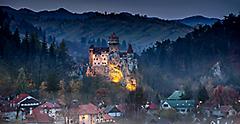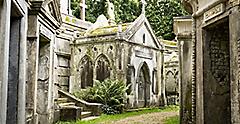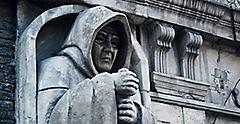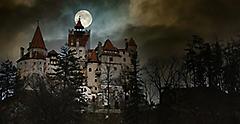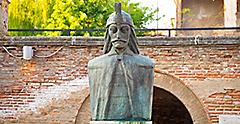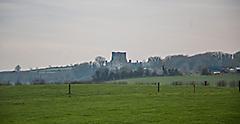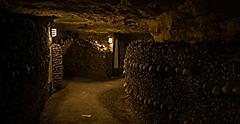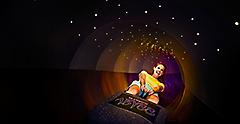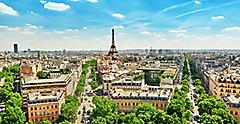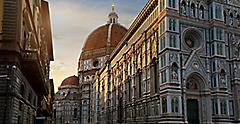By Robert Schrader | Published on January 11, 2024
Terror In London: The Most Haunted Place In The World
London is a top contender for the most haunted place in the world — this is true even if you've never been there. I mean, is there a more terrifying tale than the one of Jack the Ripper? The world's first high-profile serial killer is still unidentified, which has led some to wonder whether he was flesh-and-blood at all. If your travels do take you to London, make sure to visit the Jack the Ripper Museum, which tells the mysterious story of these unsolved murders via recreated crime scenes. Or, book a Jack the Ripper walking tour and hit the must-see spots around the city while a guide regales the infamous tales.
A trip to The Ten Bells, an iconic pub in the city's Shoreditch area, adds to the intrigue. In addition to being the last place that Mary Kelly (Jack the Ripper's final victim) was seen alive in 1888, this "haunted" watering hole has been the scene of many ghost sightings. It could be that the apparition — who's said to sport typical Victorian attire like a top hat and waistcoat — has a connection to Jack the Ripper, for whom the bar was briefly named between 1976 and 1988.
Another allegedly ghoul-ridden London locale is Highgate Cemetery, the most famous of the so-called "Magnificent Cemeteries" in and around the British capital. Opened in 1839, and with more than 170,000 souls interred in 53,000 graves, it's become a hub for those on the hunt for ghosts, vampires and all sorts of other paranormal activity. While I can't guarantee what sorts of terror await you there, I can say that the size and scope alone — it's like a city for the dead — will leave you feeling unsettled.
If you're looking for a fright on your London vacation, I'd say that the London Dungeon in South Bank is one of the spookiest places in Europe. It probably isn't haunted by ghosts of yore, having only been opened in 1974, but your experience there is bound to give you nightmares. From distant historical chapters like the Norman Conquest and the Black Death to more recent ones like Sweeney Todd — and, yes, Jack the Ripper — interactive, performative exhibitions illustrate the torture and terror that has defined so many chapters of London's macabre history. If you're a fan of gallows humor, the London Dungeon is a must-stop when you cruise to Europe.
Trace Dracula's Footsteps Through Transylvania
When you cruise to Europe to discover the scariest places to visit, head to Heathrow Airport and get on a plane to Otopeni, Romania's main international gateway. I recommend spending a day or so diving into the vampire lore around Bucharest, the country's underrated capital city. Then, hop on a train to Brasov. This is the hub of Transylvania and the best place to begin tracing the world-famous folklore that had its genesis here.
I'm speaking, of course, about the legend of Dracula, a quasi-historical figure who is tied to Bran Castle, which is about 20 minutes from Brasov's city center. While most Romanians I spoke with when I went there found foreign interest in the place funny — "I'm just here to sell garlic garlands," one told me, "and cheap plastic vampire fangs" — others were more reverent. Dracula might not have existed, but the historical figure that inspired his story definitely did.
Visiting The Creepiest Castles In Europe
Posthumously known as Vlad the Impaler (and sometimes even Vlad Dracula, which means "Son of the Dragon"), this 15th-century warlord may not have walked only at night or drank blood, but he was responsible for a lot of misery and death. Vlad's former home really lives up to its reputation as one of the creepiest castles in Europe when you visit at night. Explore the castle and meditate on the fact that more than 80,000 people died under Vlad's orders, sometimes by impalement (as his nickname suggests) but using a wide variety of other inhumane torture as well.
If you really want to lean into the legend of Dracula, and think you can handle fact and fiction blurring, I recommend visiting Brasov in autumn and walking its medieval streets at night. The combination of rustling leaves, chilly air and age-old architecture will give even the bravest goosebumps. You'll wonder whether you should've tied the string of garlic bulbs you bought earlier in the day around your neck, instead of leaving it in your hotel room!
Dublin: Bram Stoker And Beyond
Haunted Hotels In London
Just as there are haunted hotels in London, so too can you sleep in haunted habitations in the Irish capital. You can book a stay at the Shelbourne Hotel, located near St. Stephen's Green Park. Dozens of previous guests have reported feeling a supernatural presence, which some ghost hunters have postulated is an 18th-century cholera victim named Mary Masters. Various buildings in the city's Trinity College, whose library is a popular spot for modern Instagrammers, also boast a number of reported ghost sightings.
Not surprisingly, when you consider its otherworldly beauty, Dublin isn't the only place on the Emerald Isle where people have spotted beings that don't seem to be of this world. Leap Castle, located near the city of Limerick in west-central Ireland, is reputed to have several resident ghosts, including the souls of two tortured little girls, who may or may not have been murdered by the bloodthirsty "Red Lady" many also swear roams the halls. Various cemeteries along the River Shannon, which flows northeastward from Limerick to Lough (Lake) Allen, are also the sites of apparent hauntings.
Of course, when you take into account that Ireland has for centuries been a hub of faerie folklore, it could be that the culprits of these creepy chapters are more human than mystic. While it's difficult to do justice to the complexity of faerie mythology in a couple sentences, part of their intrigue is that many people don't see them as ghosts but rather magical (if small, and even sometimes imperceptible) human-like creatures forced into the shadows by the conquerors of ancient Ireland.
Dig Deeper Into The Catacombs Of Paris And Rome
A five-night France and Italy cruise takes you right to some of the most haunted places in the world. Some of my favorite places in Europe for ghost tours are old catacombs. Over 6 million dead are interred in the one beneath Paris alone. That's nearly three times the current population in the city proper! Skeptics may discount the drama that guides often infuse into tours, or the unsettling darkness and musty smell that pervades expeditions through the bone-filled tunnels, but this is one of the likeliest places in the world to be haunted.
Over the years, many people who've descended beneath the French capital have reported that the walls (or something within them) spoke to them; some have even suffered acute or chronic bouts of psychosis upon emerging from the labyrinth. Others weren't as lucky. While reports are vague, particularly from the first century-and-a-half after the caves opened in 1786, it's estimated that at least a few dozen unlucky individuals who wandered off inside the ghastly maze were never heard from again.
Rome's catacombs are older — some sectors date back to two centuries before Christ. Some of the most ancient Roman remains are those of early martyrs, many of whom met their end in the Colosseum as pre-Christian Romans cheered, in some cases, as said, martyrs were literally ripped apart.
Explore Underrated European Ghosting-Hunting Tours
Keeping in mind all the horror you find in England and Ireland, it isn't entirely shocking that Scotland also makes the list of scary places to visit in Europe. Greyfriars Kirkyard, a graveyard on the southern end of Edinburgh's old town, has a particularly spooky reputation, although it's not the only place in the Scottish capital you may feel a chill. I've had many an early morning and late night walk on the cobbles leading away from Edinburgh Castle when I heard clacking footsteps, only to turn around to see nothing but darkness and mist behind me!
While on a European vacation, head to Prague and take an excursion to Houska Castle. Although not as conspicuously creepy as some of the other edifices on this list, it's said to hide a horrifying secret. Namely, some people believe it was built over a gateway to hell and for the sole purpose of containing the evil that might otherwise escape out into our world. The owners of Houska Castle occasionally allow overnight stays as you visit this scary place, which is either a fun idea or a bone-chilling one.
Ghost hunters also occasionally pop up in the Grand Bazaar of Istanbul, Turkey, which might not immediately seem like a place to find wayward spirits. However, rumors have persisted over the years that the serpentine alleys of the market (which is one of the largest and oldest shopping venues in the world) hide portals to other dimensions, although it's unclear if ghosts lurk within them or if entering into one simply dooms you to never be seen again.
The reality, of course, is that no matter where in the "Old World" you travel, the sense of centuries (and in some cases, millennia) past hangs a heaviness in the air. We may never be able to prove definitively that the dead interred beneath European cities and countrysides still roam the surface in spirit form, but if there's one place in the world that could be haunted, Europe would be a top contender.
Get Royal Deals, Sign Up Today

Getting There
Explore Our Most Affordable Itineraries
You're in for a frighteningly good time when you cruise to Europe.
Related Articles

Can You Take Days Off Without PTO? Here's What You Need to Know | Royal Caribbean Cruises
READ MORE

[Infographic] What to Drink at Perfect Day at CocoCay
READ MORE

The Top Free Things to Do Onboard Adventure of the Seas
READ MORE
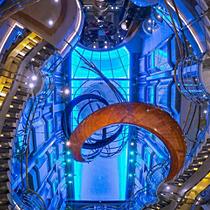
Free Things To Do Onboard Explorer of the Seas
READ MORE

